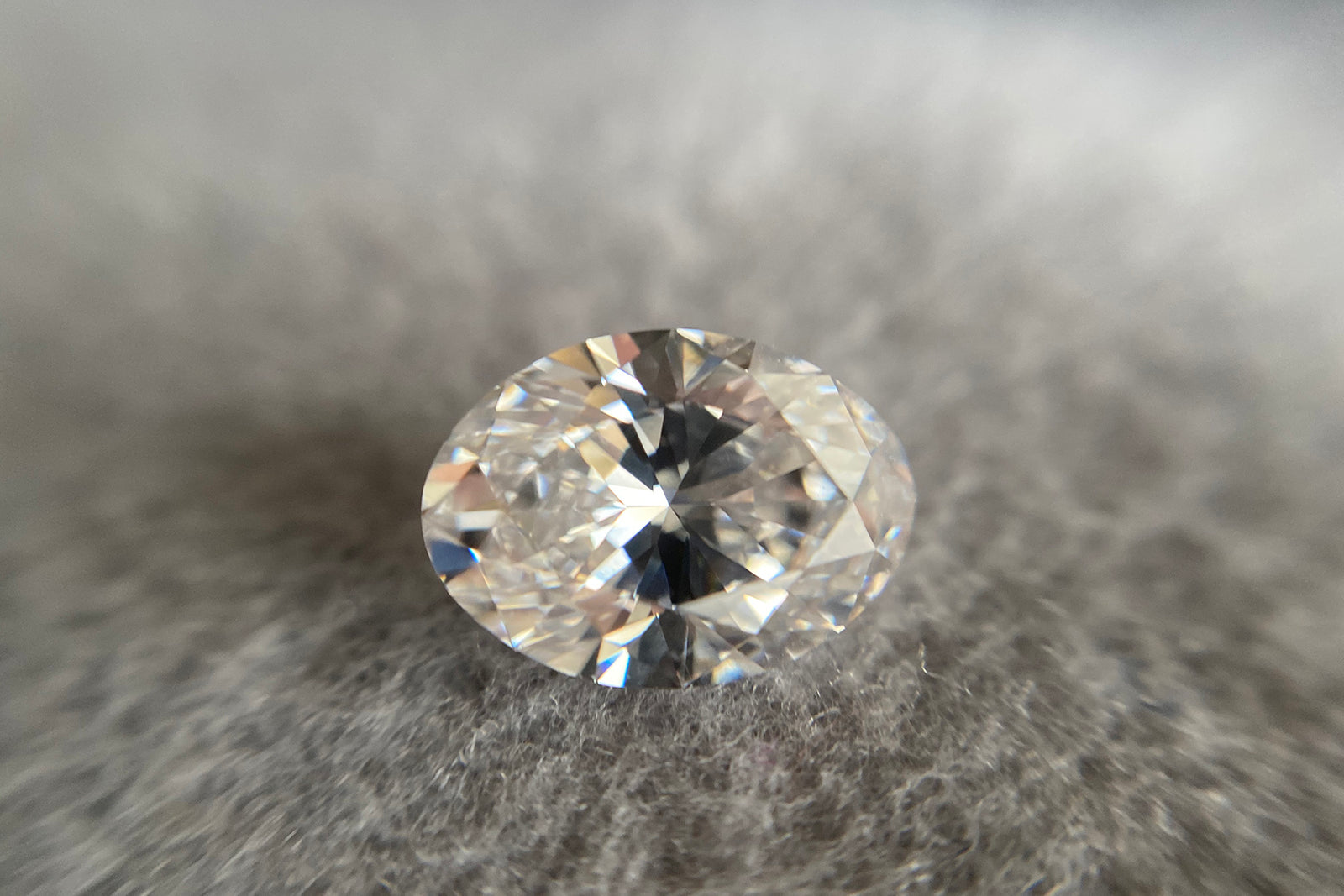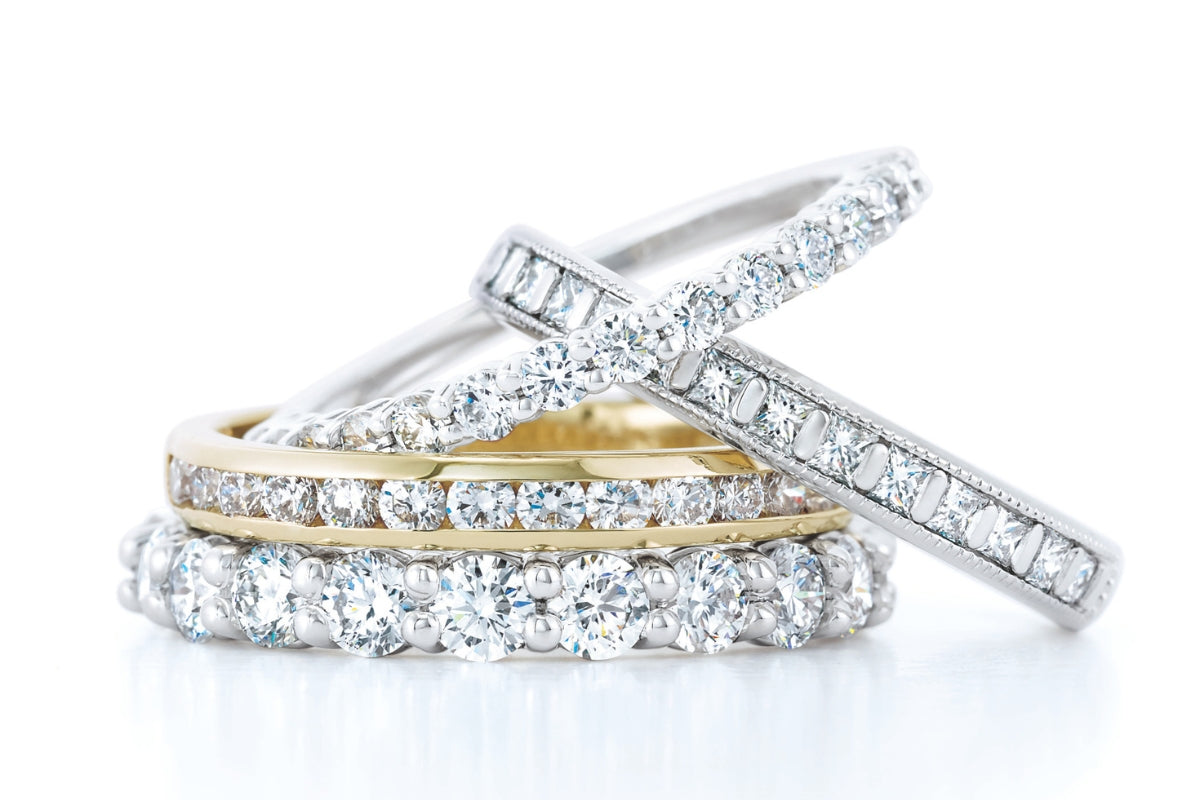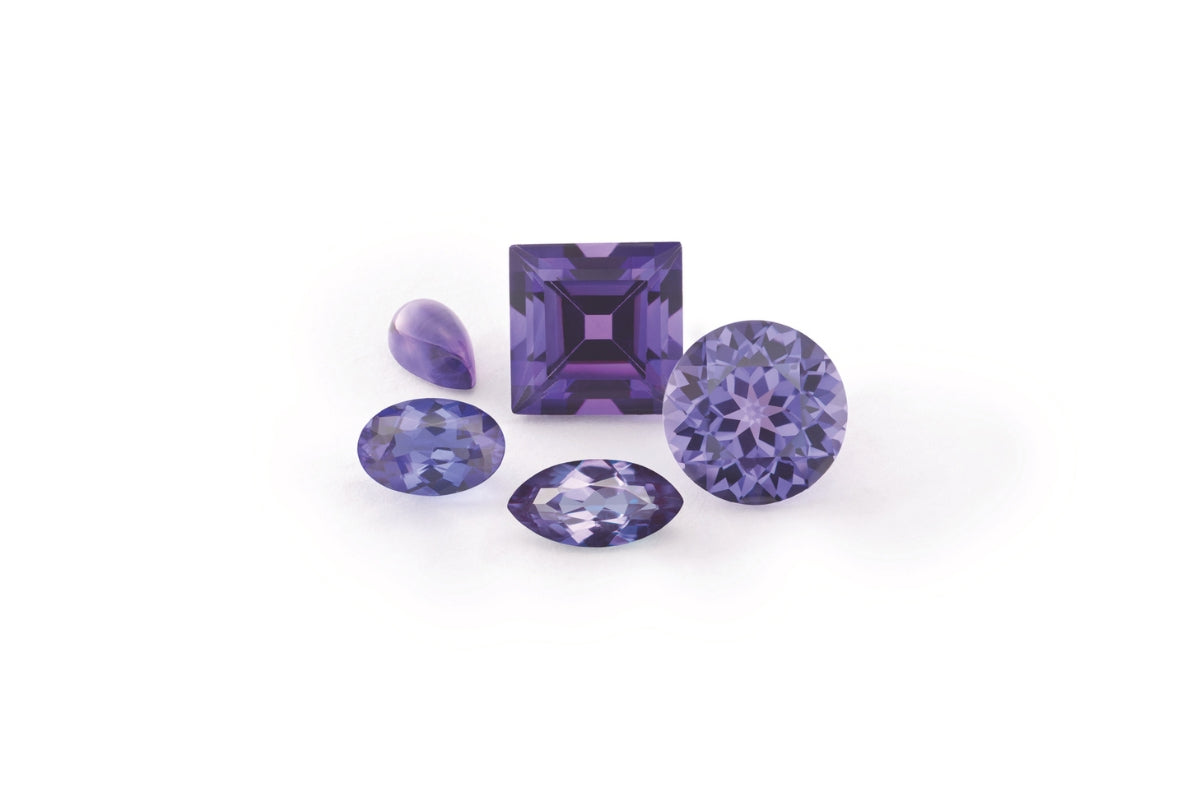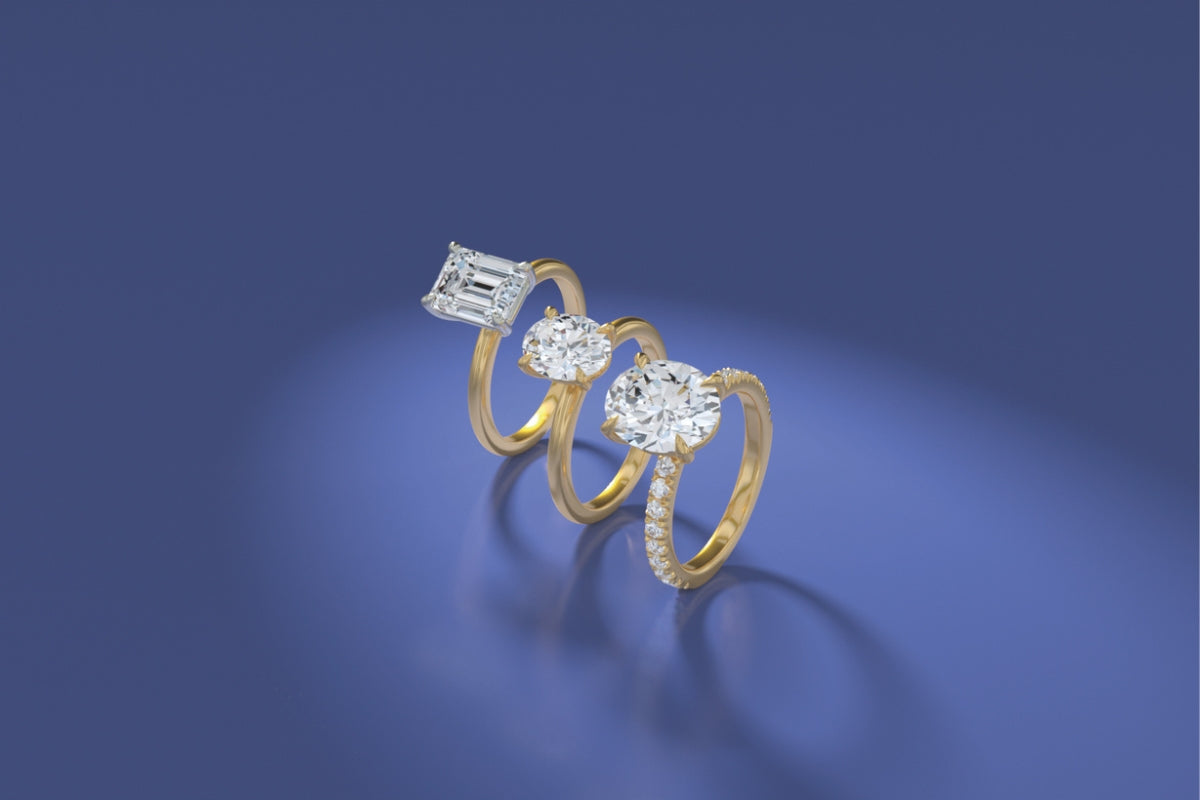If you’re considering an oval shaped diamond as your engagement ring centerstone, then you’re not alone. Oval shaped diamonds are a beautiful compliment to help elongate the finger of the wearer. The classic shape has no hard lines, points, or exaggerated angles. It’s been tremendously popular in the last 18 months as both royalty and celebrities alike have chosen this shape for its beauty and elegance.
Throughout your research, you may have come across a so-called “bow-tie” effect. Sounds a little complicated and scary right? Not to worry, we’ll discuss this effect and ensure that you are prepared with the proper expectations while shopping for oval diamonds.
So, what exactly is the “bow-tie” effect? It’s a way to describe a dark shadowy appearance seen across the largest facet of the oval, the table of the stone. Please see the reference image below:

Image Courtesy of GIA
Diamonds and gemstones need light in order to maximize all the attributes we love about them. In the case of a colorless diamond, light performance is pivotal because the facets of a diamond perform like mirrors by accumulating light from your surroundings and refracting light back to your eyes. When you hold an oval shaped diamond close up, you may notice a dark contrast caused by your head and shoulders impeding light from entering the stone. As you move the stone away from you, say from an arms length away, the less pronounced the bow tie effect will be.
Does every oval show a bow-tie? Yes. But this blockage of light and appearance of a bow-tie should not deter you from choosing an oval shaped diamond. The more well cut the diamond is, the less noticeable the bow-tie effect will be. This means that it’s a natural characteristic of the oval shape, which means one way or another, it will always be there. Just remember, once an oval is set into an engagement ring, it will rarely be viewed up close, as the natural resting position of your hand/fingers are at an arm's length away.
Now that we know that the bow-tie effect seen in ovals is a reality and characteristic of the shape, it shouldn’t bother you. Taking the bow-tie effect too seriously is a slippery slope. By that I mean the more you emphasize its presence and meticulously inspect it at any and all angles and distances, the more it may bother you. The best thing to do is work with a jeweler who will take your concerns into consideration and show you options that minimize this bow-tie effect.
For high quality ovals, the minimum Symmetry grade should at least be Very Good (VG). As we approach Excellent (EX), it becomes more and more uncommon and rare. In fact, just because the symmetry grade is Excellent, it doesn’t necessarily mean it specifically has less of a bow-tie effect. The symmetry grade is much more comprehensive than that and would require a separate blog post to dive into its specific criteria. For a fancy shaped diamond, Excellent symmetry is really a top tier "make" when it comes to the attention to detail in the symmetry of the facets. Please note, we are not referring to “Polish” as that documents the outer condition of the stone which has no impact on the perceived bow-tie effect.
At this time, keep in mind that no such "bow-tie" effect will be listed on any diamond grading report. It's usually documented internally on a diamond grader or appraisers worksheet. Since the appearance and therefore description of the bow-tie effect is subjective, you may hear various unofficial terms attempting to describe it.
In order to accurately assess the bow-tie effect in ovals, graders would view the stone with the unaided eye, which means they do not use magnification, under normal lighting conditions, and from the face-up position. Graders look for mainly two things: One, the size of the bow-tie, determined by how much of the face-up position it takes up. Two, the tone of the bow-tie effect, which can appear to be light gray to black in tone. Hence, the higher contrast it has with the rest of the stone, the more it will stand out, and therefore, the more it adversely affects the diamond’s overall appearance and value.
Gemologically, there are three terms used to describe and access the bow-tie effect. For your convenience, I will describe what you can generally expect each description to mean:
- "Slight"
- If it covers a small surface area and is light grey in tone
- "Noticeable"
- If it covers a medium surface area and is dark in tone
- "Obvious"
- If it covers a large surface area and is very dark to black in tone
If you happen to be shopping for an oval diamond online, you may have access to images, videos, and the certification, but none of the above will tell you about the presence of the bow-tie effect.
Though a picture or video can be a fantastic "preview" of a diamond and give a perspective on a stone that you may not have the luxury of seeing physically, it’s not a substitute for in-person inspection by a trained Gemologist or jeweler. In fact, even viewing the 360 degree video doesn’t do the stone justice in determining the presence of the bow-tie effect.
Side note, you should know that any image or video showing the stone no matter how clear and well lite the image or video may appear, it isn't how diamond grading laboratories, Graduate Gemologists, or experienced jewelers assess or even grade any attribute of the 4Cs, let alone the bow-tie effect. This is because capturing the beauty and aura of a diamond via image or video is difficult, especially considering that the orientation and the amount of light flooding it, don't represent how it will be viewed from a "face-up" in person position.
You may be wondering if the bow-tie can be avoided by the cutter. Well, in the eyes of the cutter, it's an unavoidable outcome with a varying degree of impact and a small compromise in exchange for maximizing the other attributes of the stone's rough potential. For example, its carat weight (size), brilliance, fire, and overall color/clarity grade are of higher significance (in no particular order) when examining the rough and choosing to facet the oval shape.
Every diamond is truly unique and different from one another because of imperfections inside or outside of the stone. With that understanding, from a Gemologist perspective, we can only hope to have the true potential maximized in each rough diamond crystal and in some sense, we all have to live with the results. Further, this means that certain attributes of the 4Cs will inevitably be prioritized at the expense of other attributes. Pursuing perfection, though well intentioned, can easily become a costly endeavor as such stones are rare. For a few, this is well worth it. For most, it’ll come down to choosing the most well balanced overall stone, or choosing to focus on attributes you find most important within your budget. What I'm describing above is the norm, but as we approach stones that seemingly have it all in terms of minimal or no perceived compromises and high 4C grades, then we approach a different caliber of diamond.
There isn't necessarily a universal "best option" for everyone. Each client’s goals are unique. Therefore, it’s important to define the criteria you have and the many human constraints everyone has while shopping in terms of budget, design, and timeline. Find yourself a jeweler who prides themselves on being transparent by taking the time to educate you. It’s important for jewelers to establish proper expectations and most importantly, respect your budget.




